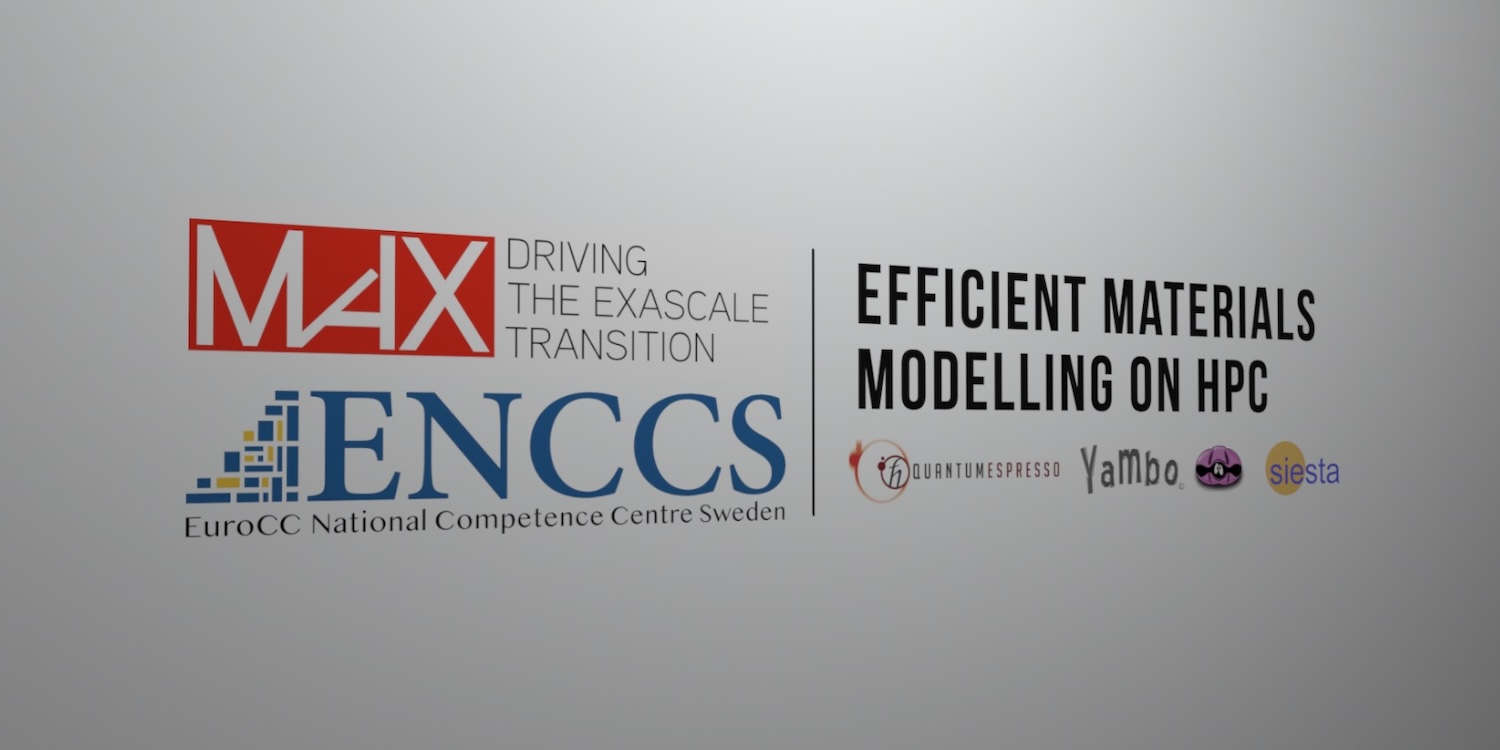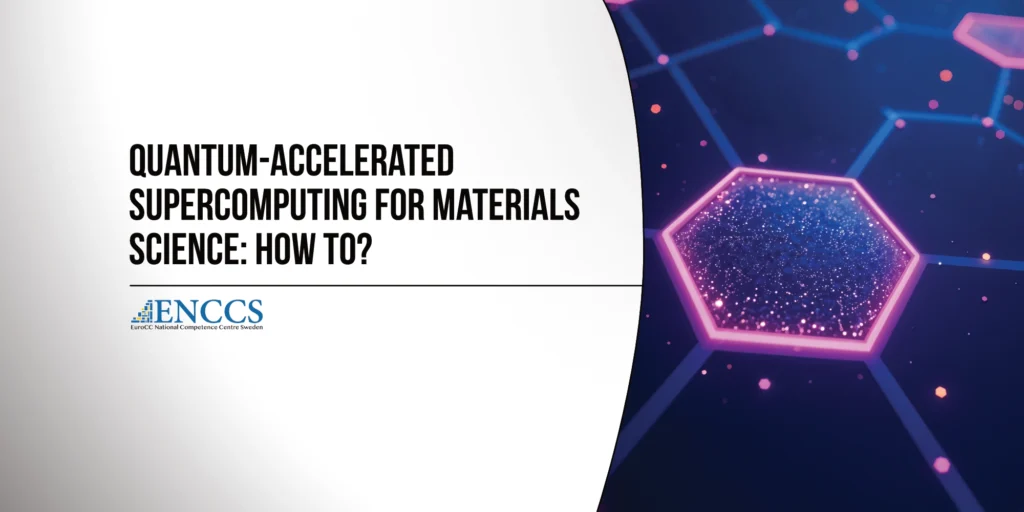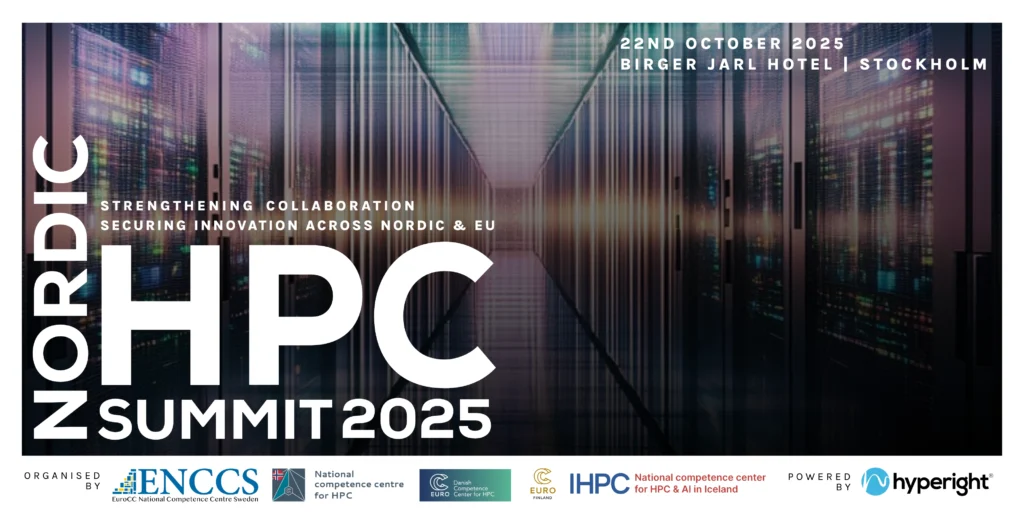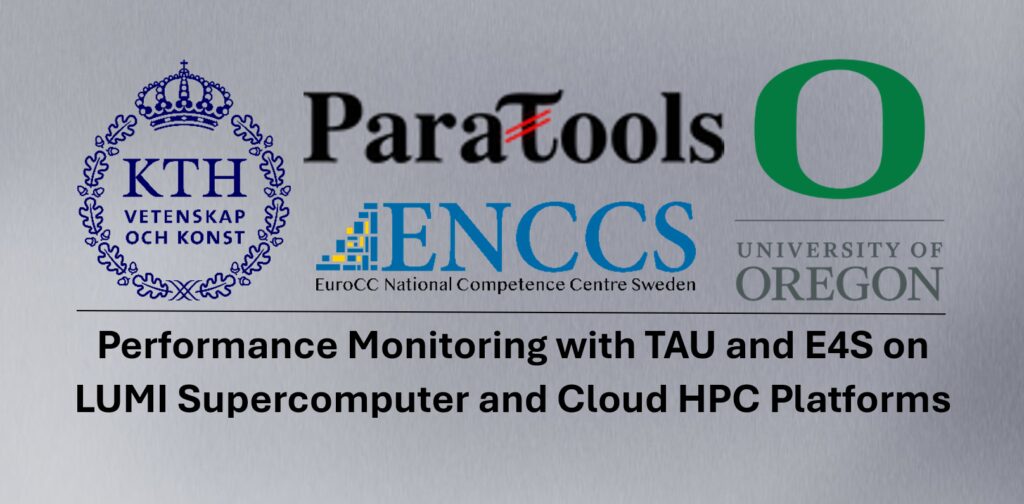
- This event has passed.
Efficient materials modelling on HPC with QUANTUM ESPRESSO, SIESTA and Yambo (Online)
11-15 March 2024, 09:00–13:00 CET

Overview
This workshop will give a broad overview of important fundamental concepts for molecular and materials modelling on HPC, with a focus on three of the most modern codes for electronic structure calculations (QUANTUM ESPRESSO, Yambo and SIESTA). Participants will put their new knowledge to the test on the Leonardo EuroHPC JU supercomputer (https://leonardo-supercomputer.cineca.eu/hpc-system/) with theory sections and practical demonstrations and hands-on exercises.
In recent years, computing technologies underlying materials modelling and electronic structure calculation have evolved rapidly. High-performance computing (HPC) is transitioning from petascale to exascale, while individual compute nodes are increasingly based on heterogeneous architectures that every year become more diversified due to different vendor choices. In this environment, electronic structure codes also have to evolve fast in order to adapt to new hardware facilities.
Nowadays, state-of-the-art electronic structure codes based on modern density functional theory (DFT) methods allow treating realistic molecular systems with a very high accuracy. However, due to the increased complexity of the codes, users need some extra skills in order to fully exploit their potential.
The applications
QUANTUM ESPRESSO (https://www.quantum-espresso.org/) is one of the most popular suites of computer codes for electronic-structure calculations and materials modelling at the nanoscale, based on density-functional theory, plane waves, and pseudopotentials. It is able to predict and give fundamental insights about many properties of materials, molecular systems, micro and nanodevices, biological systems, in many fields, providing a huge amount of data for data-driven science applications.
SIESTA (http://www.max-centre.eu/codes-max/siesta) is a pseudopotential-based DFT software whose strength lies in its use of atomic-like strictly-localised basis sets: the use of a “good first approximation” to the full problem decreases the number of basis functions needed to achieve a given accuracy, and the finite support of the orbitals leads to sparsity in the Hamiltonian and overlap matrices, thus enabling the use of reduced-scaling methods. The functionalities of SIESTA include, amongst others, the calculation of energies and forces, molecular-dynamics simulations, band structures, densities of states, spin-orbit couplings, van der Waals functionals, DFT+U for correlated systems, real-time TDDFT, and non-equilibrium calculations with TranSIESTA.
YAMBO (http://www.yambo-code.eu/) is an open-source code implementing first-principles methods based on Green’s function (GF) theory to describe excited-state properties of realistic materials. These methods include the GW approximation, the Bethe Salpeter equation, nonequilibrium GF (NEGF) and TDDFT, allowing for the prediction of accurate quasiparticle energies (e.g. ARPES band structures), linear and non-linear optical properties, capturing the physics of excitons, plasmons, and magnons. It is also possible to calculate temperature-dependent electronic and optical properties via electron-phonon coupling and nonequilibrium and non-linear optical properties via NEGF real-time simulations (pump-probe experiments, etc).
What you will learn
In this workshop, participants will learn how to launch the most common types of calculations (e.g. scf, phonons, quasi-particle energies, time-dependent properties) using Quantum ESPRESSO, Yambo and SIESTA, how to prepare input files and how to read output files in order to extract the desired properties.
You will discuss efficient exploitation of HPC resources, with particular emphasis on how to use the different schemes of data distribution (e.g. plane waves, pools, images) in combination with the different parallelization and acceleration schemes (MPI, OpenMP, GPU-offload) available in Quantum ESPRESSO, SIESTA and Yambo.
Prerequisites
This workshop is for researchers and engineers who already have some previous experience with materials modelling and electronic structure calculations:
- Basic familiarity with density functional theory (DFT), self-consistent field (SCF) calculations and plane wave basis sets is desirable as the workshop will not cover the fundamental theory of these topics.
- Basic familiarity with working in a Linux environment and some experience with working on an HPC system is needed to participate in the hands-on exercises.
Disclaimer
Due to EuroCC2 regulations, we cannot except generic or private email addresses. Please use your official university or company email address.
This training is intended for users that live and work in the European Union or a country associated with Horizon 2020. You can read more about the countries associated with Horizon2020 here https://ec.europa.eu/info/research-and-innovation/statistics/framework-programme-facts-and-figures/horizon-2020-country-profiles_e
Instructors and helpers
QUANTUM ESPRESSO
- Pietro Davide Delugas (SISSA)
- Ivan Carnimeo (SISSA)
- Oscar Baseggio (SISSA)
- Fabrizio Ferrari Ruffino (CNR-IOM)
- Paolo Giannozzi (CNR-IOM, UniUD)
- Iurii Timrov (Paul Scherrer Institut)
- Laura Bellentani (CINECA)
- Tommaso Gorni (CINECA)
- Aurora Ponzi (CNR-IOM)
SIESTA
- Emilio Artacho (CIC NanoGUNE and University of Cambridge)
- Catalina Coll (ICN2)
- José Mª Escartín (ICN2)
- Roberta Farris (ICN2)
- Ernane de Freitas (ICN2)
- Alberto García (ICMAB-CSIC)
- Arnold Kole (Utrecht University)
- Nick Papior (DTU)
- Federico Pedron (ICN2)
- Miguel Pruneda (CINN-CSIC)
- José Ángel Silva Guillén (IMDEA Nanociencia)
Yambo
- D. Varsano (CNR-NANO)
- A. Ferretti (CNR-NANO)
- D. Sangalli (CNR-ISM)
- A. Guandalini (Univ. of Rome, La Sapienza)
- F. Paleari (CNR-NANO)
- M. D’Alessio (Univ. Modena and Reggio Emilia, CNR-NANO)
- G. Sesti (CNR-NANO)
- N. Spallanzani (CNR-NANO)
Helpers
- Yonglei Wang (ENCCS/LiU)
- Thor Wikfeldt (ENCCS/RISE)
- Qiang Li (ENCCS/LiU)
- Wei Li (ENCCS/LiU)
Agenda
Monday, March 11th
| Time (CET) | Topic |
|---|---|
| 09:00-09:15 | Welcome and introduction to ENCCS |
| 09:15-09:30 | Introduction to Max-CoE and MaX flagship codes |
| 09:30-10:10 | Overview of the QE suite of codes and main features |
| 10:10-10:25 | Coffee break |
| 10:25-13:00 | PWSCF for HPC and GPU |
Tuesday, March 12th
| Time (CET) | Topic |
|---|---|
| 09:00-09:45 | Introduction to Density Functional Perturbation Theory |
| 09:45-10:15 | Introduction to Time Dependent Density Functional Perturbation Theory |
| 10:15-10:30 | Coffee break |
| 10:30-13:00 | Phonons and time dependent properties on HPC and GPU |
Wednesday, March 13th
| Time (CET) | Topic |
|---|---|
| 09:00-09:45 | SIESTA basics |
| 09:45-10:30 | A first contact with SIESTA: inputs, execution and outputs |
| 10:30-10:45 | Break |
| 10:45-11:30 | Convergence (K points, Mesh, Mixing) |
| 11:30-12.00 | Basis sets |
| 12:00-13:00 | Basis set optimization |
Thursday, March 14th
| Time (CET) | Topic |
|---|---|
| 09:00-10:00 | Moving atoms: geometry optimisation and beyond |
| 10:00-11:00 | Analysis tools |
| 11:00-11:15 | Break |
| 11:15-11:45 | Features available in SIESTA: spin-orbit couplings, TranSIESTA, and others |
| 11:45-13:00 | Pushing the boundaries of SIESTA: accelerated and massively parallel solvers |
Friday, March 15th
| Time (CET) | Topic |
|---|---|
| 09:00-09:20 | Overview of the Yambo code and its main features and performance |
| 09:20-10:00 | Introduction to the GW approximation |
| 10:00-10:20 | Coffee break |
| 10:20-13:00 | Hands-on tutorial: A guided tour through GW simulations (convergence, algorithms, parallel usage) |
ENCCS Lessons
The previous similar instance of Efficient Materials Modelling can be found at our page with previous lesson materials.










